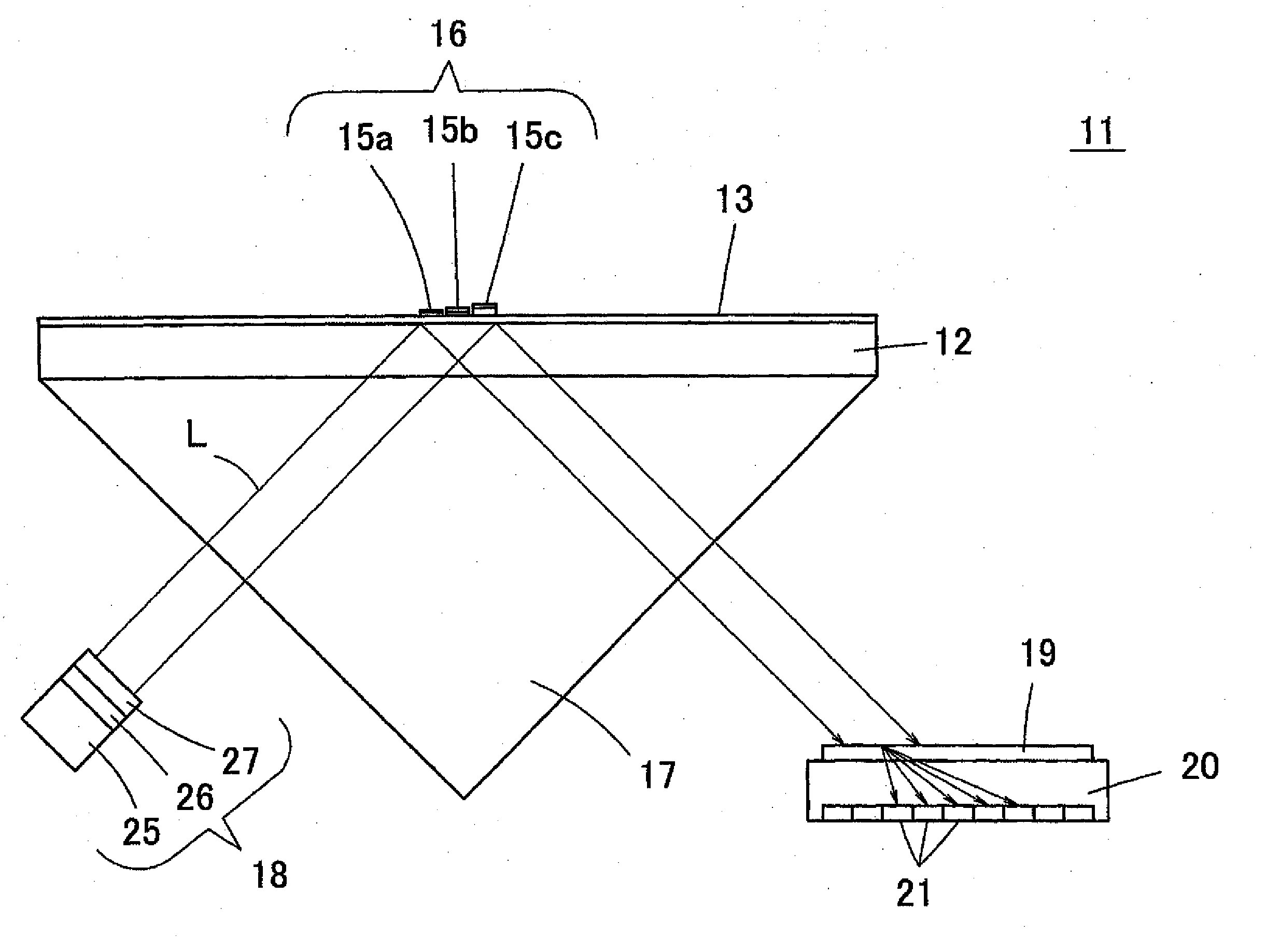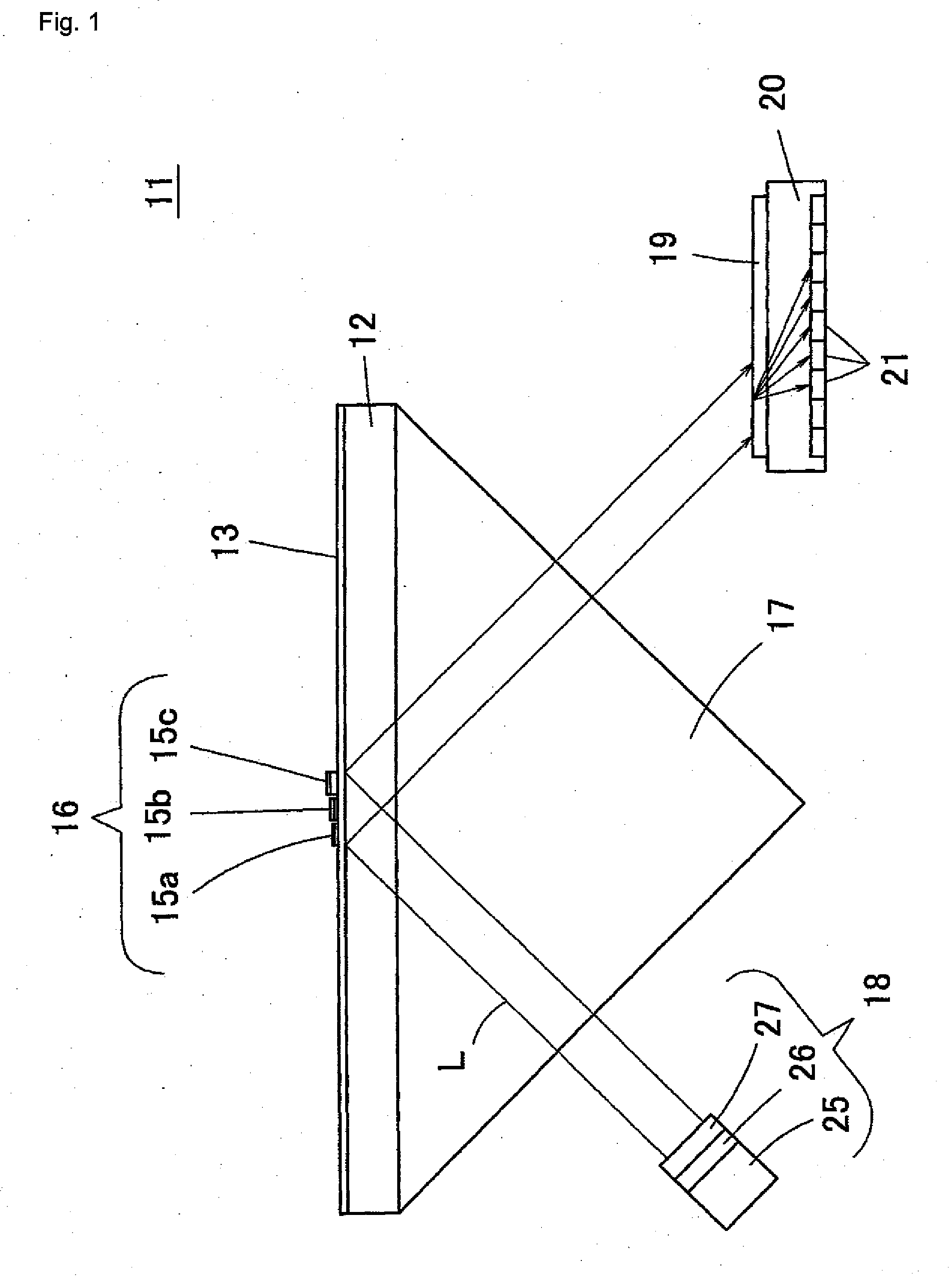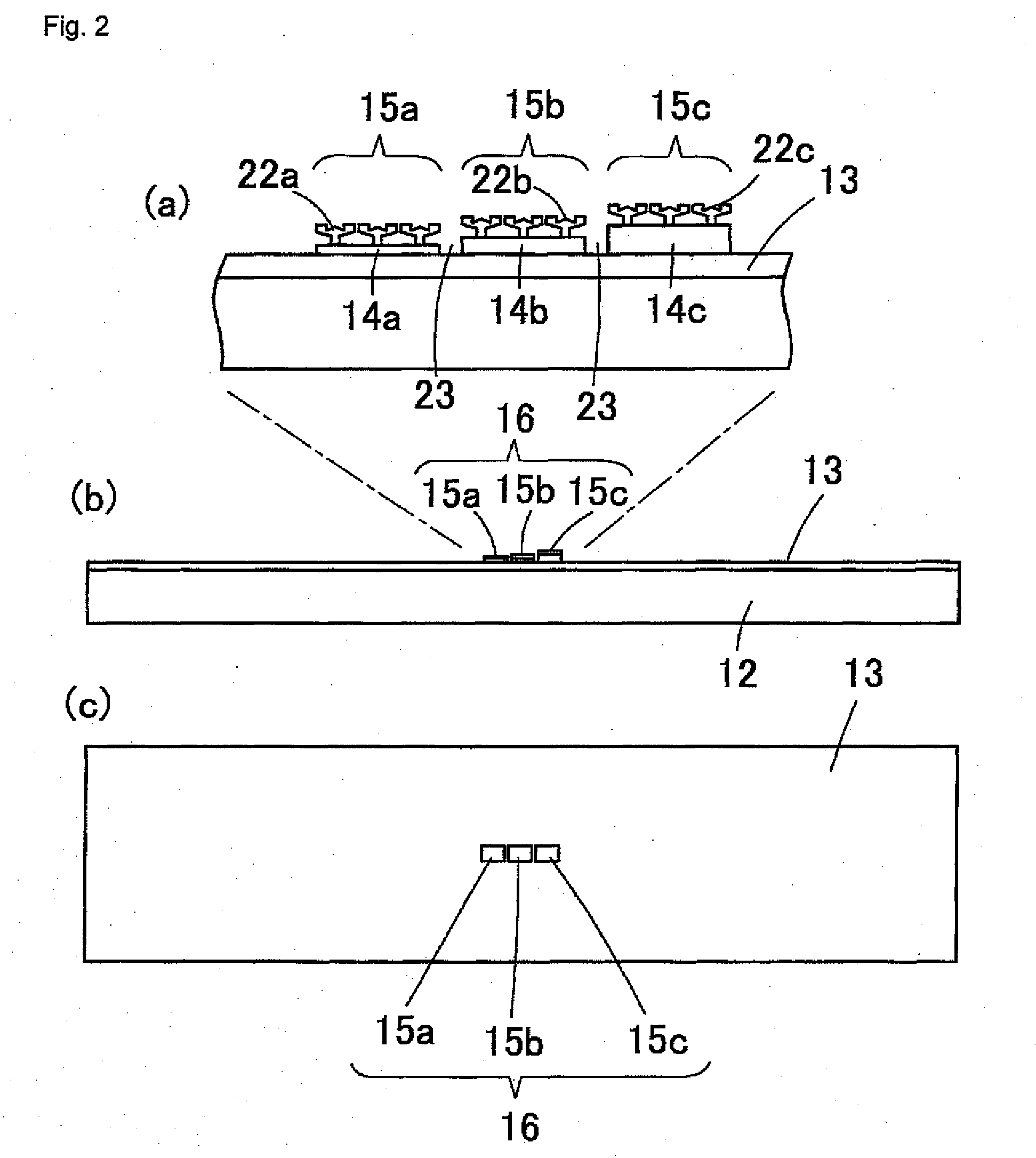Chip for surface plasmon resonance sensor and surface plasmon resonance sensor
a technology of surface plasmon and sensor, which is applied in the direction of optical radiation measurement, instruments, spectrometry/spectrophotometry/monochromator, etc., can solve the problems of increasing the size of the apparatus, and affecting the accuracy of the apparatus, so as to achieve the effect of small size and high accuracy
- Summary
- Abstract
- Description
- Claims
- Application Information
AI Technical Summary
Benefits of technology
Problems solved by technology
Method used
Image
Examples
first example
[0097]FIG. 1 is a schematic view illustrating a surface plasmon resonance sensor 11 according to the first example. The surface plasmon resonance sensor 11 according to the first example is a bulk-type surface plasmon resonance sensor including a prism 17 and employs so-called Kretschmanm placement.
[0098]The surface plasmon resonance sensor 11 includes a transparent substrate 12 made of a plastic such as PMMA, polycarbonate (PC) or polystyrene (PS) or a glass, and a metal layer 13 (metal thin film) formed on the entire surface of the transparent substrate 12. The transparent substrate 12 has a refractive index equal to that of the prism 17. The metal layer 13 is made of Au, Ag, Cu and the like formed on the upper surface of the transparent substrate 12 by vacuum deposition or sputtering.
[0099]On the upper surface of the metal layer 13, there is formed a sample detection portion 16 constituted by a plurality of determination areas 15a, 15b, 15c. FIG. 2(a) is an enlarged view of the s...
second example
[0134]FIG. 13(a) is a schematic view illustrating a surface plasmon resonance sensor 31 according to a second example of the present invention, and FIG. 13(b) is a view illustrating a sample detection portion 16 therein, in an enlarged manner. In the first example, the metal layer 13 is formed in the areas outside of the determination areas 15a, 15b and 15c, but, in the surface plasmon resonance sensor 31 according to the second example, a metal layer 13 is not provided in the areas outside of determination areas 15a, 15b and 15c and is not exposed through the dielectric layers 14a, 14b and 14c. Accordingly, a transparent substrate 12 is exposed at the areas outside of the determination areas 15a, 15b and 15c, which enables applying hydrophilic processing or hydrophobic processing to the areas other than the determination areas 15a, 15b and 15c. This can prevent antigens from adhering to the areas other than the determination areas 15a, 15b and 15c, which can reduce signal noises du...
third example
[0136]FIG. 15 is a front view illustrating a surface plasmon resonance sensor 41 according to a third example of the present invention. FIG. 16(a) is an enlarged view of sample detection portions 16 in the surface plasmon resonance sensor 41. FIGS. 16(b) and (c) are a side view and a plan view of the sample detection portions 16 formed on the upper surface of a metal layer 13. In the surface plasmon resonance sensor 41 according to the third example, the sample detection portions 16 constituted by a plurality of determination areas 15a, 15b and 15c are arranged longitudinally and laterally (in the illustrated example, three sample detection portions are arranged in the longitudinal direction and four sample detection portions are arranged in the widthwise direction). Further, FIG. 17 is a plan view illustrating an array of light receiving devices 20, illustrating a plurality of light receiving devices 20 arranged longitudinally and laterally such that they correspond to the respecti...
PUM
| Property | Measurement | Unit |
|---|---|---|
| thicknesses | aaaaa | aaaaa |
| thicknesses | aaaaa | aaaaa |
| thickness | aaaaa | aaaaa |
Abstract
Description
Claims
Application Information
 Login to View More
Login to View More - R&D
- Intellectual Property
- Life Sciences
- Materials
- Tech Scout
- Unparalleled Data Quality
- Higher Quality Content
- 60% Fewer Hallucinations
Browse by: Latest US Patents, China's latest patents, Technical Efficacy Thesaurus, Application Domain, Technology Topic, Popular Technical Reports.
© 2025 PatSnap. All rights reserved.Legal|Privacy policy|Modern Slavery Act Transparency Statement|Sitemap|About US| Contact US: help@patsnap.com



